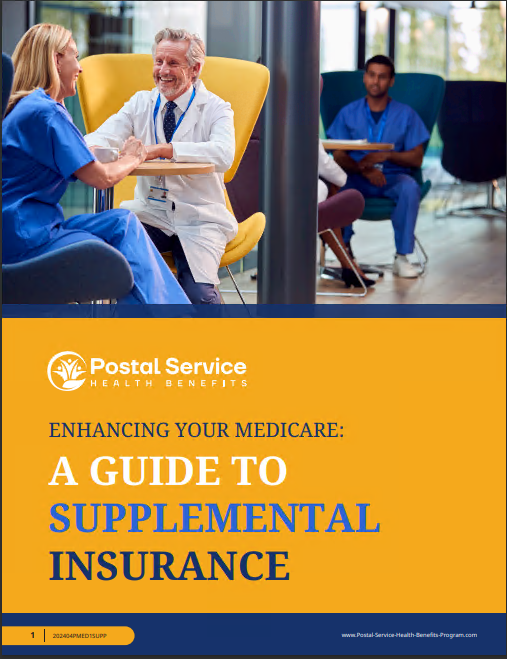Key Takeaways
- The transition to the Postal Service Health Benefits (PSHB) program is a significant change that every retired postal worker needs to understand thoroughly.
- Early preparation and knowledge of the differences between PSHB and FEHB are crucial for a seamless transition to post-retirement health coverage.
What Every Retired Postal Employee Needs to Know About Transitioning to PSHB
With the implementation of the Postal Service Health Benefits (PSHB) program, retired U.S. Postal Service (USPS) employees face a major shift in their health insurance coverage. Understanding the nuances of this transition is crucial for ensuring that retired postal workers continue receiving the health benefits they need. As the PSHB gradually replaces the Federal Employees Health Benefits (FEHB) program for postal workers, there are key aspects every retiree should be aware of, from eligibility to plan options and enrollment periods.
Why USPS Retirees Should Pay Attention to PSHB
For decades, postal retirees have relied on the FEHB program for their healthcare coverage. However, with the creation of the PSHB under the Postal Service Reform Act of 2022, there is now a separate health plan structure for USPS employees and retirees. PSHB was designed to better align with the unique needs of postal workers while ensuring that they still enjoy comprehensive health coverage during their retirement years.
The main reason this transition is vital is that it will change how postal retirees access their health benefits, potentially affecting the plans available to them and how their premiums are structured. Being prepared for these changes ensures that retirees don’t face any interruptions in their healthcare.
Key Dates to Keep in Mind
Understanding when the PSHB changes take place is critical for a smooth transition. While the PSHB won’t officially start until January 2025, there are steps retirees should take before then. It’s important to watch for open enrollment periods and other key deadlines that ensure retirees are transitioned into the new system without losing coverage.
What is the Postal Service Health Benefits Program?
The Postal Service Health Benefits (PSHB) program is a new healthcare program specifically for current and retired USPS employees. Its primary goal is to offer postal workers and retirees a tailored plan that still draws on the strengths of the FEHB while adapting to the unique needs of USPS employees.
One of the major differences with PSHB is that all USPS retirees, particularly those turning 65, will need to enroll in Medicare Part B to maintain their PSHB coverage. This requirement is new for many, and it may involve additional costs, so understanding how this affects long-term budgeting is important.
How is PSHB Different from FEHB?
The PSHB is similar to FEHB in that it offers health insurance coverage to postal workers and retirees, but it is a separate program with its own structure. While FEHB covers a broad range of federal employees, the PSHB is exclusively for USPS employees and retirees. This program is designed to better manage the healthcare needs of postal workers and retirees while also working to cut down healthcare costs for USPS as a whole.
The shift to PSHB will affect the types of plans available, the premium structure, and the coordination between PSHB and Medicare, particularly for retirees over 65.
Medicare Integration: What Retirees Need to Know
For many retired postal employees, the transition to PSHB means mandatory enrollment in Medicare Part B. While some retirees might already be familiar with Medicare, others may not have had to enroll in Part B under the FEHB plan. Under PSHB, retirees 65 and older must be enrolled in both Medicare Part A and Part B to retain their PSHB coverage.
This new rule highlights the need for retirees to budget for Medicare Part B premiums, which can come as an unexpected cost if they haven’t planned for it. However, once enrolled in Medicare Part B, retirees may experience reduced out-of-pocket expenses, as Medicare will cover many services first, with PSHB acting as a secondary payer.
What Retired Postal Workers Should Do Now
Transitioning from FEHB to PSHB isn’t automatic, and there are several steps retirees should take to ensure they remain covered without interruption. Here’s a brief guide on what retired postal workers should start doing to prepare for this shift:
1. Review Your Current Coverage
The first step is to understand your current health coverage under FEHB and how the transition to PSHB might impact you. This includes reviewing your current benefits, costs, and how much you rely on your existing plan for healthcare services.
2. Learn About Medicare Part B Enrollment
If you’re nearing 65 or already over that age, you’ll need to prepare for Medicare Part B enrollment. Since it’s required for continued PSHB coverage, understanding Medicare’s costs, benefits, and enrollment process will help avoid any lapses in coverage.
3. Monitor Open Enrollment Periods
Stay informed about open enrollment periods for the PSHB program. This is when you’ll have the opportunity to select the specific health plan that works best for your needs. Missing this period could result in gaps in your healthcare coverage, so it’s critical to pay attention to these dates.
4. Talk to a Licensed Insurance Agent
It’s often helpful to seek guidance from a licensed insurance agent who can help navigate the complexities of transitioning to PSHB. These professionals can offer personalized advice based on your individual health needs and retirement status, ensuring you choose a plan that fits your situation.
Common Concerns About the PSHB Transition
Will My Benefits Change?
One of the biggest concerns for retired postal workers is whether their benefits will change under PSHB. While the PSHB program is designed to offer comprehensive coverage similar to what retirees had under FEHB, there will be some differences in terms of plan options and cost-sharing structures. It’s important to review the available plans carefully during the transition to ensure your healthcare needs are still met.
What Happens If I Don’t Enroll in Medicare Part B?
Retirees who are eligible for Medicare Part B but do not enroll may face penalties or higher costs. More importantly, they risk losing their PSHB coverage altogether. Since Medicare Part B is required for PSHB, this step cannot be overlooked.
How Will This Impact My Family’s Coverage?
If you have family members covered under your FEHB plan, you’ll need to consider how the transition to PSHB will impact their coverage as well. Family members may still be eligible for coverage, but it’s essential to review how dependent and spouse coverage works under the PSHB plan you choose.
Preparing for Retirement Healthcare Changes
The transition from FEHB to PSHB represents one of the most significant changes in postal retirees’ health coverage in recent history. Properly preparing for this change is the key to avoiding coverage gaps and ensuring that your healthcare needs are met in retirement. By understanding the PSHB program, reviewing your current coverage, and making timely decisions regarding Medicare, you can make the transition smooth and worry-free.
Future-Proof Your Healthcare
As healthcare costs continue to rise, securing comprehensive coverage is more critical than ever. For postal retirees, ensuring they understand the benefits and requirements of PSHB is a necessary step in safeguarding their healthcare for the long term. The shift to a new healthcare program doesn’t have to be daunting. With the right information and proactive steps, retired postal workers can transition confidently into the next phase of their health coverage.
How PSHB Impacts Retirees’ Healthcare
With PSHB coming into effect, every retired postal employee must make sure they’re adequately prepared for the changes in healthcare coverage. From understanding Medicare Part B requirements to reviewing available plans, ensuring the right decisions are made will help retirees maintain the coverage they need.






